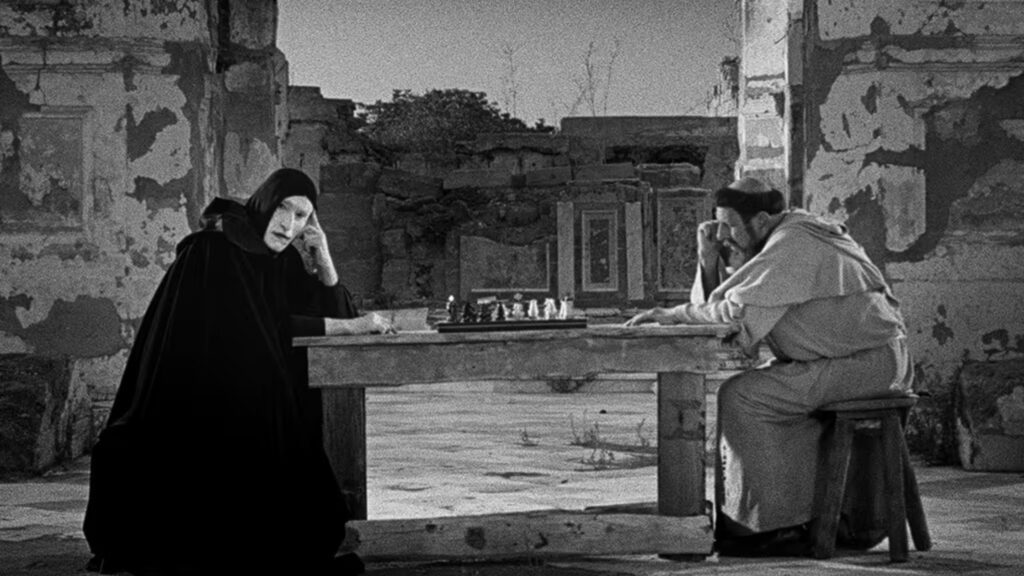Movie Blog — Un Film Fatto per Bene (2025): Behind the Camera, Into the Maze of Cinema.
Director Franco Maresco returns with a provocative, self-reflexive film-essay of his own making: Un Film Fatto per Bene (“A Well-Made Film” / literally “A Film Made for Bene”). It’s a meta-cinema piece that simultaneously exposes and exaggerates the torments of filmmaking, while paying tribute to the irreverent visionary Carmelo Bene. The result is both a wreckage of a would-be production and a meditation on obsession, failure, ego and art-making. This blog explores the cast, the central character-perspective, its box-office/market fate, its niche in contemporary cinema, and a deep dive into its narrative and thematic complexity.
Cast & “means character”
Cast
Although the film takes the shape of a documentary-mockumentary hybrid, it features a roster of real people (some appearing as themselves) and recurring collaborators of Maresco. Key credited persons include:
- Franco Maresco (himself/director).
- Umberto Cantone (himself/investigator of the filmic collapse)
- Bernardo Greco.
- Francesco Conticelli
- Marco Alessi (producer/participant)
- Francesco Puma
- Antonio Rezza (actor, collaborator)
- Giuseppe Lo Piccolo, Gino Carista, Melino Imparato among others.
If you count the credited “cast” list (including the above plus further participants), you are looking at roughly 8–12 names who play major narrative roles (as themselves or semi-fictionalised selves) in the film. The hybrid nature means there are more “voices” than typical feature-films, but fewer formally “actors” playing characters.
Means Character.
Although there is no fictional protagonist in the usual sense, the film is driven by Franco Maresco’s own perspective — his attempt to make a film about Carmelo Bene, the collapse of that project, his disappearance and the investigation by his friend Umberto Cantone. In narrative terms, Maresco is the centre: we follow his frustration, his vision, his failure, his vanishing. Therefore the “means character” (the character whose journey we mostly follow) is Maresco himself. Umberto Cantone’s investigation functions as a structural vantage point, but the emotional and narrative weight lies with Maresco’s artistic odyssey.
Box Office / Commercial Context.
Un Film Fatto per Bene is not designed for broad mass-market appeal. Some key commercial points:
- The film premiered in competition at the 82nd Mostra Internazionale d’Arte Cinematografica di Venezia (Venice 2025).
- It is produced by Lucky Red and Dugong Films (with Eolo Film Productions) and distributed in Italy by Lucky Red.
- There is no public record (so far) of blockbuster box-office numbers; the film appears in art-house circuits and is likely to garner its returns (if at all) through festival recognition, Italian domestic art-house release, and later international sales/licensing.
Therefore the conventional “box collection” metric must be interpreted: this film’s success is less about millions at the box-office and more about critical visibility, festival placement and sustaining artistic reputation.
The Niche & Tone
Niche
This film occupies a very specific niche: the meta-cinema / auteur-essay film — a self-reflective piece about film-making, failure, memory and artistic myth. It appeals to cinephiles, academics, fans of Italian auteur cinema and avant-garde investigators. It is not mainstream entertainment; it is art-house, intellectual, sardonic.
Tone & Themes
- The tone is ironic, self-aware, confessional and theatrical. Maresco self-portrays the collapse of his own film project while also turning it into a spectacle. Reviewers describe it as part documentary, part “mockumentary” — a sort of “film about making a film that collapses”.
- Themes include: the vanity and torment of art-making, the myth of Carmelo Bene, the idea of “filmicide” (the murder of one’s film), the relationship between director and producer, the absurdity of production delays, and the boundary between fiction and reality. For example, Maresco proclaims that if things don’t “go well” you suffer.
- The film also examines Sicilian-Italian cinema culture, patronage, failure and the ghost of the avant-garde. It is simultaneously a tribute to Bene and an unflinching critique of the system that elevates and destroys such figures.

Deep Narrative & Analysis
Story Overview
The film begins with the narration (or rather the unfolding) of Maresco’s attempt to make a film about Carmelo Bene — a radical theatre/film figure of 20th-century Italy. The project was commissioned, filming began, but was plagued by endless takes, delays, production chaos and what Maresco calls “filmicide” (the killing of a film before completion). The producer (Andrea Occhipinti) finally pulls the plug. Maresco disappears. His friend Umberto Cantone becomes a sort of investigator: he interviews all who were there, pieces together fragments, tries to find Maresco and understand the collapse.
Structural Beats
- Act I – Project Launch & Crash: Maresco launches the film. We see rehearsal scenes, takes, the “set” moments, absurd delays and escalate tensions. Cinematic voices revolt; the set becomes battleground.
- Act II – Aftermath & Investigation: Maresco disappears; Cantone interviews guests, crew, actors, producers. They recount bizarre incidents, failures, scraps of vision, and glimpses of the ghost of Bene (both person and myth).
- Act III – Reflection & Myth-Making: The film shifts into a meditative phase: are we seeing the “real” collapse or a performance of collapse? Bene’s idea of cinema as “the counter-image of itself” (echoed in the film) becomes central. Maresco’s vanishing is itself part of the film. The film ends open-ended — we are left with fragments, images, questions about art and chaos.
Key Scenes & Thematic Highlights
- A scene where Antonio Rezza plays “La Morte” (Death) and confronts San Giuseppe da Copertino (Bernardo Greco) becomes emblematic of the film’s mixture of highbrow myth, pop excess and production absurdity.
- A sequence in a hotel room (Room 50) in Palermo where Maresco gets his hair cut, while the crew discuss endless takes — an image of vanity, waiting, time wasted.
- Footage of Sicilian landscapes, the ghost of Bene’s theatre work, rehearsals of “Eufrasio” (a repeated line) — these become motifs of obsession, repetition, failure and glory.
What Works
- The film’s audacity: Rarely does a director so openly turn the camera on his own failure and production meltdown. This self-reflexive honesty is compelling.
- Maresco’s voice: For years a maverick in Italian cinema, his language here is sardonic, poetic and disturbingly intimate. The film has real moments of existential weight.
- Cinematic texture: Scenes of filming, failing, waiting, are captured with cinematography that embraces imperfection, which suits the theme of “movies undone.”
- Tribute to Carmelo Bene: The film doesn’t simply obscure Bene; it evokes his ghost, his aesthetics, his self-destruction and his myth. For cine-historians this is rich.
What Might Alienate Viewers
- Opacity: If you’re not familiar with Carmelo Bene, Italian avant-garde, Maresco’s earlier work or the language of meta-cinema, the film may feel inscrutable.
- Lack of conventional narrative: There is no clear story in the sense of hero-journey; it’s more a collage of failure, memory and self-attack. That can frustrate viewers expecting a “normal” film.
- Insider focus: Many of the jokes, references (e.g., Sicilian film culture, Bene’s theatre, Italian production pitfalls) are niche. If you’re outside that world, some of the bite may be lost.
- Commercial prospects: Because the film deliberately eschews mainstream appeal, its viewership is likely limited to festivals, cine-clubs and art houses.
Why This Film Matters.
- It exemplifies the kind of cinema that questions the very idea of cinema: What is the cost of making a “good” film? What happens when the film goes bad? What is the terrain of the avant-garde in the present day?
- It brings attention to Carmelo Bene’s legacy in a moment where national cinemas are reckoning with their histories.
- It reflects on Italian film-production culture: the myth of the auteur vs. the log-jam of production, the collapse of ambition, the persistence of hope.
- For young filmmakers or cine-students, it is a rare behind-the-scenes view that doesn’t sugarcoat but frames the failure of film-making as part of its form.
Final Verdict.
Un Film Fatto per Bene is not for everyone. It is provocative, esoteric and sometimes self-indulgent. But for those willing to engage with a film about films, about failure, about art’s wasted nights and endless takes, it is a rich, wild ride. Franco Maresco gives us a mirror — cracked, hazy, funhouse-like — and invites us to look.
If you’re drawn to Italian auteur cinema, cinematic essays, meta-reflections on film-making or the work of Carmelo Bene, this film is essential. If you want straightforward entertainment, linear storytelling or broad accessibility, you might find it baffling or frustrating.
In short: it’s a film made for (and about) cine-obsession, the struggle for meaning in film-production, love-hate relationships with art, with failure, with myth. It doesn’t promise resolution — it promises the messy, wounded, thrilling world of trying to make something “well-made” in a system built for collapse.





